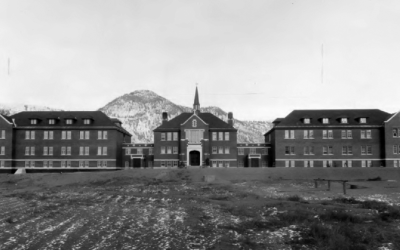Toronto and Winnipeg: The Frontier Centre for Public Policy today released Stealth Equalization: How Federal Government Employment Acts as a Regional Subsidy in Canada. The study finds that there is a hidden, supplemental regional economic subsidy in place that injects over $2 billion collected from taxpayers across the country into the provincial economies of four out of the five “have not” provinces that receive large-scale equalization payments. Examining Statistics Canada data, Frontier policy analyst Ben Eisen shows that the federal government’s employment of large numbers of federal government workers in four of the five major have-not provinces – Manitoba, Nova Scotia, New Brunswick and Prince Edward Island–constitutes a regional economic subsidy by stealth.
Eisen found that in the major equalization recipient provinces other than Quebec, federal government (including federal government business enterprises) employment as a proportion of the population is between 63% and 225% higher than the national average. The additional wages paid to public servants in these four have-not provinces beyond what would be spent on wages if employment were distributed evenly across the country constitutes a transfer of wealth from taxpayers across the country into these four provinces.
“It is well-known that transfers such as the equalization program have led to the development of large, inefficient bureaucracies at the provincial level in the provinces that rely heavily on transfers,” said the study’s author Ben Eisen. “What this [new] study shows is that in addition to these large provincial bureaucracies, high levels of federal government employment in all the have-not provinces other than Quebec has created an additional thick layer of bureaucracy.”
“In the have-not provinces, an unhealthy situation has developed in which government spending dominates economic activity. This squeezes the dynamism out of the private sector. In this situation, the best and brightest young talent overwhelmingly seek government jobs, or else move to other provinces where vibrant market-oriented economies create more opportunities in the private sector.”
In Nova Scotia, for example, this regional subsidy is 68% as large as official equalization itself. Eisen concludes his study by discussing the adverse impacts of regional economic subsidies in Canada.
Key Findings:
This examination of Statistics Canada data reveals several important facts about Federal Government employment in Canada:
· Of the five major equalization recipient provinces, all but Quebec have levels of per capita federal government employment far above what would be the case if government employment were distributed according to Canada’s population.
· The rate of Federal government employment in PEI is 2.28 times higher than in the country as a whole. In Nova Scotia, the rate of federal employment is twice as high as the rest of the country. In New Brunswick and Manitoba, the rate of federal government employment is approximately 63 per cent higher than in the nation as a whole.
· Newfoundland, Ontario and Quebec have levels of federal employment that are approximately equivalent to the national average.
· Saskatchewan, British Columbia and Alberta have very low levels of federal government employment. The rate of federal employment in Alberta is just 58 per cent of the national average.
· The three have- not Maritime provinces and Manitoba have rates of federal government employment that are substantially higher than Ontario’s despite the presence of Canada’s national capital in that province. For example, Nova Scotia has 84 per cent more federal employees per 100,000 people than does Ontario.
This study estimates the total cost of additional federal employment (the stealth equalization) in the recipient provinces by comparing total spending on federal government wages and salaries in these provinces to the amount that would be spent on wages and salaries if federal spending on government wages per capita were in line with the national average. The data show that stealth equalization from high rates of federal employment constitute a significant top-up to the official equalization program in four have-not provinces.
Stealth Equalization
|
Province
|
Actual Federal Spending on Wages and Salaries
|
Spending on Federal Wages and Salaries if Employment Were Evenly Distributed.
|
Total Stealth Equalization Transfer (Into the Provincial Economy)
|
|
PEI
|
$298-million
|
$145-million
|
$153-million
|
|
Nova Scotia
|
$1.92-billion
|
$978-million
|
$942-million
|
|
New Brunswick
|
$1.17-billion
|
$779-million
|
$391-million
|
|
Manitoba
|
$1.86-billion
|
$1.25-billion
|
$610-million
|
Source: Calculations by author based on Statistics Canada Table 183-0002.
Stealth Equalization Compared to Official Equalization
|
Province
|
Explicit 2009-2010 Equalization Receipts
|
Stealth Equalization
|
Stealth Equalization as a Per Cent of Official Equalization
|
|
PEI
|
$340-million
|
$153-million
|
45%
|
|
Nova Scotia
|
$1.39-billion
|
$942-million
|
68%
|
|
New Brunswick
|
$1.69-billion
|
$391-million
|
23%
|
|
Manitoba
|
$2.06-billion
|
$610-million
|
30%
|
These tables show that provincially unbalanced federal government employment creates a substantial top-up to official equalization – injecting a total of more than $2 billion into the local economies of these four small provinces. In Nova Scotia, this regional subsidy is 68% as large as official equalization itself.
Download a copy of the Stealth Equalization HERE.
For more information and to arrange an interview with the study’s author, media (only) should contact:
|
Ben Eisen
416-587-1106
|
Marco Navarro-Genie, Ph.D.
Research Director,
Frontier Centre for Public Policy
403-995-9916
navarrom@fcpp.org
|


